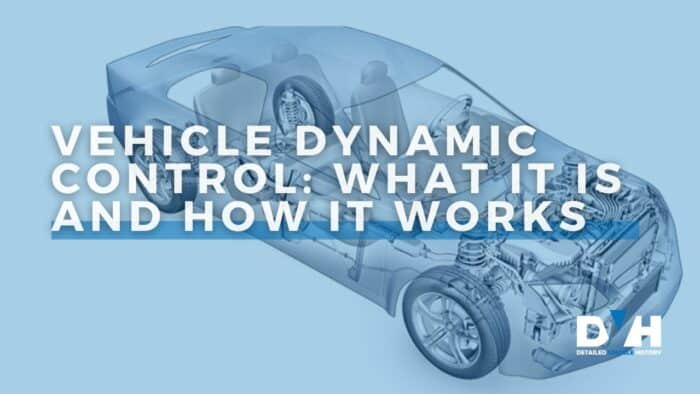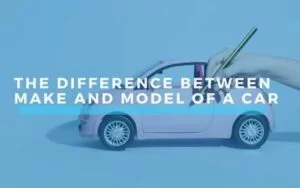Have you ever wondered how modern vehicles maintain stability and control on the road, even in challenging driving conditions? The answer lies in a remarkable technology called Vehicle Dynamic Control (VDC). In this article, we’ll explore what VDC is, how it works, and why it’s such an important feature in today’s automobiles. So buckle up and let’s dive into the world of vehicle dynamic control!
Introduction to Vehicle Dynamic Control
To put it simply, Vehicle Dynamic Control (VDC) is an advanced system designed to enhance a vehicle’s stability and handling by actively monitoring and adjusting its various components, such as acceleration, steering angle, and braking pressure. By continuously analyzing data from sensors placed throughout the vehicle, VDC can detect when a driver is losing control of their vehicle and swiftly intervene to prevent loss of control and improve overall safety. Pretty cool, right? To have a better visualization of what we’re talking about, let’s see the components of vehicle dynamic control (VDC).
Components of Vehicle Dynamic Control
VDC consists of several key components that work together seamlessly to maintain the stability of vehicles on the road. The major components include:
Anti-lock Braking System (ABS)
The ABS prevents the wheels from locking up during braking, allowing the driver to maintain steering control. It works in tandem with VDC by providing crucial data on wheel speed.
Traction Control System (TCS)
The TCS helps prevent wheel slippage during acceleration, particularly in low-traction situations like slippery roads or uneven terrain. It communicates with VDC to ensure optimal control and grip.
Electronic Stability Control (ESC)
Electronic stability control is the heart of VDC. It continuously monitors various parameters, such as vehicle speed, steering angle, and lateral acceleration. If it detects a loss of control, it intervenes by selectively applying braking force to individual wheels and adjusting engine power to bring the vehicle back on track.
Steering Angle Sensor
This sensor measures the angle and rate of rotation of the steering wheel. It provides crucial information to the VDC about the driver’s input and intentions, and when any struggle is noticed, you can be sure that the VDC will step in.
Wheel Speed Sensors
These sensors monitor the rotational speed of each wheel. By comparing the speeds of all four wheels, VDC can detect irregularities that might indicate a loss of traction or stability.
I’m sure everything’s getting clear now, but that’s not all. Let’s now see what the VDC system does exactly and how it works.
Practical Instances of How Vehicle Dynamic Control Works
Now that we understand the components, let’s see how VDC works in real-world scenarios:
Understeer Prevention
When a vehicle enters a corner too quickly and begins to understeer (where the front wheels lose grip), VDC comes into action. It selectively applies braking force to the appropriate wheels, helping the driver regain control by reducing the vehicle’s speed and redirecting it through the turn.
Oversteer Mitigation
On the other hand, when a vehicle experiences oversteer (where the rear wheels lose grip), VDC intervenes by applying braking force to the relevant wheels and adjusting engine power. This action helps stabilize the vehicle and prevent it from spinning out. Thanks to the Vehicle Dynamic Control, you will be protected and safe in such situations.
Traction Enhancement
What about traction enhancements? In low-traction situations, such as driving on icy or wet surfaces, VDC collaborates with the Traction Control System (TCS) to improve grip. By monitoring wheel speeds and detecting any wheel slippage, VDC can selectively apply braking force to the slipping wheels, transferring torque to the wheels with better traction.
Emergency Situations
You must be wondering if the VDC can identify severe emergency situations such as swerving to avoid an obstacle, or related emergencies. So, Yes! The VDC plays a crucial role in emergency maneuvers. Let’s take the example of a driver suddenly swerving to avoid an obstacle. With the VDC, vehicle stability can be significantly improved in such situations by selectively braking individual wheels to counteract any potential loss of control.
With the VDC, safety just went up a notch! But remember, the VDC doesn’t replace human efforts, and you need to ensure your driving skills are excellent and your vehicle is in good condition. Speaking of which, have you checked your vehicle for outstanding damages and defects? This question goes to both car owners and buyers. If you are buying or driving a used car, it’s best to be sure of the vehicle’s overall condition and reliability before putting it to the test on the road. And how do you find this information? Through a VIN check.
What’s a VIN check?
A VIN check, as the name implies, is the process of decoding the VIN to gain access to specifications, history, and records. With Detailed Vehicle History, you can verify and validate your vehicle’s condition before purchasing it or putting it out on the road. With our detailed vehicle history reports, you can check out the vehicle’s:
- ― Accident history
- ― Damage history
- ― Service records
- ― OEM maintenance schedules
- ― Open recalls
- ― Vehicle specifications
- ― Auction history with photos (when available)
- ― Sales history
- ― Lien and loan records
- ― Theft records
- ― Ownership history
- ― Title-brand records
- ― Warranty information, and more
With the report, you can be sure of any vehicle’s condition before buying it at any dealership.
Benefits of Vehicle Dynamic Control
The benefits of vehicle dynamic control, also known as the dynamic stability system, are innumerable, but the most important ones are:
✔️ Enhanced Safety: VDC helps prevent accidents by actively intervening when a loss of control is detected. By automatically adjusting braking force and engine power, it assists the driver in regaining control and avoiding potential collisions.
✔️ Improved Stability: With VDC, vehicles are more stable and responsive, especially during challenging driving conditions. It provides an added layer of confidence and control, making driving safer and more enjoyable.
✔️ Better Traction: The VDC works hand-in-hand with the TCS to optimize traction in various scenarios. By selectively applying braking force to slipping wheels, it improves grip and ensures better control over the vehicle.
✔️ Seamless Integration: VDC seamlessly integrates with other safety systems in the vehicle, such as ABS and ESC, creating a comprehensive safety net. The collaboration between these systems enhances overall performance and driver confidence.
In conclusion, vehicle dynamic control (VDC) is an advanced technology that significantly improves a vehicle’s stability and handling. By constantly monitoring various parameters and intervening when necessary, VDC enhances safety, provides better control, and optimizes traction. Its integration with other safety systems makes it an indispensable feature in modern automobiles. So the next time you hit the road, remember that VDC is there to keep you safe and in control. Drive confidently, and enjoy the journey!










